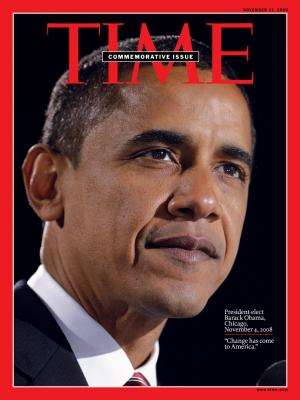Computational linguists predict TIME's "Person of the Year" using computer model

On Wednesday 11 December the American TIME Magazine will announce its 'Person of the Year' 2013. An international team of computational linguists has now built a quantitative model that has predicted the outcome for 2013.
Ever since 1927 TIME has annually named a "Person of the Year". In doing so, the American weekly journal highlights the one person "who TIME's editors think most influenced the news this year, for good or bad". An international team of computational linguists has now built a quantitative model that has predicted the outcome for 2013. The model only uses the articles which TIME itself published during the previous year.
Learning to rank
With methods from computational linguistics it is possible to measure the "cultural impact" of people in texts. It turns out to be very significant, for instance, if a person is continuously mentioned in a long series of issues of TIME. Instead of using the plain frequencies of names, the model uses an advanced technology called "Learning to Rank" that is often used by online search engines. The model moreover makes smart use of Wikipedia to resolve ambiguous person names. Of course, computers have a hard time to determine which "Clinton" is meant in a text at first sight.
29 percent accurate
The researchers have tested their model on a previous list of 'Persons of the Year'. For the period 1923-2006, the "Person of the Year" was among the model's top-ten candidates in 78 percent of the all the years tested. Furthermore, the model was able to rank the correct person in first position in 29 percent of the cases.
These are excellent scores, because the magazine often mentions over 5000 distinct persons per year. Sometimes, TIME also elects abstract groups, such as "The American Soldier" in 2003. "Understandably, the method fails in the case of such difficult to predict choices", says Mike Kestemont (University of Antwerp, Belgium).
Folgert Karsdorp (Meertens Institute, Amsterdam / Radboud University Nijmegen) further comments: "It is quite surprising that we were able to model this mediatized election in a lot of cases. Perhaps our prediction will prove right tomorrow; perhaps not. TIME's editors always have the last word and they are certainly not scared of last-minute surprises."
Barack Obama?
For 2014 the model predicted the following ranking, with Barack Obama in first position and a surprising third position for actress Miley Cyrus. The recently deceased Mandela falls just outside the top 10 in this list. The international team of researchers now anxiously awaits tomorrow morning's official announcement of TIME's "Person of the Year". In the near future they will submit their method for peer review with a leading scientific journal. These results demonstrate the major role which computers are yet to play in scientific research, especially in what is nowadays called the "Digital Humanities" or "eHumanities".
- Barack Obama
- Vladimir Putin
- Miley Cyrus
- George W. Bush
- Angelina Jolie
- Katie Couric
- David Bowie
- Rush Limbaugh
- John Kerry
- Hamid Karzai
Provided by Radboud University Nijmegen



















